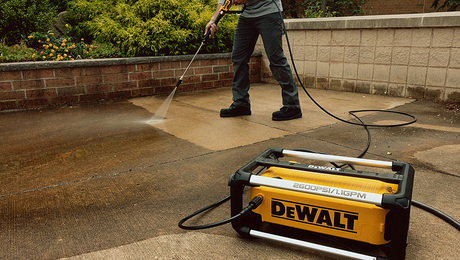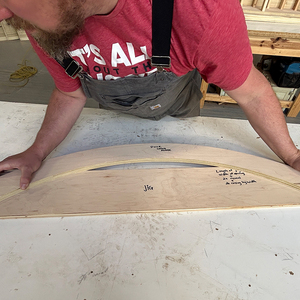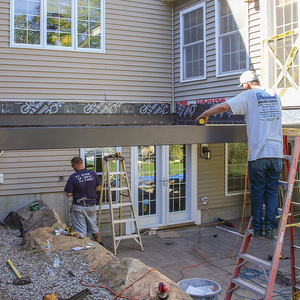What are steps and material to prep bathroom wall and ceiling in highrising concrete building flat?

I am forced to do a renovation in my bath due to the destruction (tiles and part of cement stuff) of the wall during washing…
The bathroom has artificial ceiling build like walls from mesh wired cement board (two layers grey and white).
One side is hollow wall with two cement boards + wire mesh and a lot of plumbers pipes inside due to shower room that’s contacted alongside.
In that wall I cut hole to exchange bath valve. For now I suppose the hole will put new mesh (diamond holes as old one), after to put parging mix layer, after durabond 90 layers.
a) So, is there something wrong with that due it’s located in bathroom, I mean do I need to use different stuff or that one is enough?
On top of the wall I will tile and around the bath as usual.
The ceiling has hairline cracks.
b) What steps and material/stuff from Homedepot or Lowes or Rona to buy to accomplish my task that’s painted ceiling and patched, tiled and painted walls in the bathroom?
Any thoughts are welcome!
Only one thing, sorry, but do not recommend to replace existing walls to modern using boards as it’s not a wood based with wood laths as a skeleton inside walls house but high-rising building where walls built from wired mesh with cement layers on top and metallic profile instead the wood laths, and one of the walls contacts with public corridor as well as ceiling.




















Replies
What you have is expanded metal lath. This material is used as a base either for old-fashioned plaster or for tile work. If you want to install new plaster you should probably use a two-coat scheme with a "brown coat" and a "finish coat". (The "scratch coat" is probably not necessary.) Or it can be a base for tile using thinset mortar.
So, my steps should be as;:
1) Clean mechanically all destroyed stuff from these walls:
1) a) old tiles with thinset glue (white layer)
1) b) any white thinset mortar(or portland cement) based layer
1) c) anything that destroyed next as grey layer - cement (thinset or mortar or portland cement - iss any difference between tese terms?)
2) Patch holes and cavities with:
2) a) first coat purging mix Quickrete(or Sakrete) with water
2) b) second coat the same above
3) third coat to make at least flat / plumb surface (not smooth as will covered with tiles) with |Durabond 90 / CGC/USG Drywall compound with water
4) put what AcrylPro or VersaBond with water ?
4) a) thinkness for glue ? / to use small tile trowler or big one?
4) b) seams ? 1/8 3/16 1/4 as that what I see in store - spacers
4) c) Spacers only simple like asmall cross or Level System where they hold on vertical syrface too?
if you will be tiling, then you should not be concerned using durabond or any other material you chose like this. you should just take care to properly water proof your new shower walls and floor so that whatever product you end up going with will be unaffected.
If I put Durabond and Drywall Compound to made plumb / flat surface what I have to do now?
1) To remove these layers til purging mix
2) To remove all layers including purging mix?
2) a) To use thinset grey color mortar or portland cement with water (brand name and material name are welcome)?
2) b) To put as second layer white cement plaster with added waterprofing cement stuff, which one?
3) To leave it and roller up with RedGard and after tiling?
if you will be tiling, then you should not be concerned using durabond or any other material you chose like this. you should just take care to properly water proof your new shower walls and floor so that whatever product you end up going with will be unaffected.
I have couple questions:
1. Why I cant use Durabond or drywall compound as third layer before tiling?
1.a. |Either tiles will fall shortly because thinset mortar cant contact to durabond or drywall?
2. Which one worse, and dont use it Durabond or Drywall Compound?
3. When these above must be use only?
4. RedGard I put right away before putting glue to tile?
4.a. RedGard - do I need to cover also old-fashioned waterproofed white color plaster on the walls?
Because I literally can wash with sponge on that plaster and it's waterproof like say plastic surface.